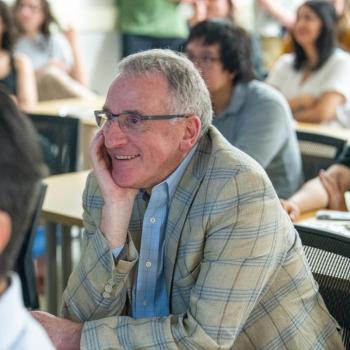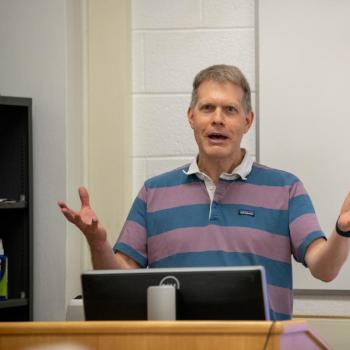More than 50 faculty, staff, students and friends in the Penn State Eberly College of Science Department of Astronomy and Astrophysics celebrated the unveiling of the first ultrahigh-definition images and videos from the U.S. National Science Foundation(NSF)–Department of Energy (DOE) Vera C. Rubin Observatory on Monday, June 23. Over the next decade, the observatory will conduct the Legacy Survey of Space and Time (LSST), to create an ultra-wide, ultra-high-definition time lapse record of the Universe.
“Penn State has been an LSST Member Institution since 2005, and our faculty have held roles on the LSST board, science advisory committee, and science collaborations,” said W. Niel Brandt, holder of the Eberly Family Chair in Astronomy and Astrophysics and professor of physics at Penn State and co-chair of the LSST Active Galactic Nuclei Science Collaboration. “Using the largest camera ever built, with an unusually wide field of view spanning about 45 times the size of the full moon on the sky, the Rubin Observatory will launch a new era in astronomy. This combination will allow us to better detect real-time changes in the sky as well as rare events.”

Using a 3,200-megapixel camera the size of a car, the Rubin Observatory—located on the Cerro Pachón mountaintop in Chile—will scan the entire visible southern sky every three to four nights. The sky will be imaged in six different filters covering the range from blue to near-infrared light. By stitching the resulting clips together, the LSST collaboration will produce the most detailed time-lapse view of the cosmos that has ever existed.
Each night, the Rubin Observatory is expected to reveal a wealth of celestial information; for example, 10 million moving objects, supernovae, gamma-ray burst afterglows, and emission from millions of supermassive black holes. Because of the wide field of view, each object will be observed over 800 times over 10 years. Instead of researchers applying for time on telescopes to study a specific object, scientists in the LSST collaboration will have access to all the data.
“This effort is expected to produce about 20 terabytes of data each night, for a total of almost 60 petabytes,” said Donald Schneider, distinguished professor of Astronomy and Astrophysics, who is Penn State’s representative on the LSST-Discovery Alliance Institutional Board. “Using this vast amount of data, we can investigate questions ranging from Earth-crossing asteroids in our solar system, the structure of the Milky Way galaxy, the evolution of supermassive black holes, as well as the nature of dark matter and dark energy.”
Read more on the Pittsburgh Post-Gazette and WPSU and support the astronomy and astrophysics department.
Brandt discussed the many scientific questions that will be addressed by LSST in a talk during the Eberly College of Science’s 2023 Ashtekar Frontiers of Science lecture series, and a recording can be found on the college’s YouTube channel. For additional information on LSST, contact Brandt at wnb3@psu.edu or Schneider at dps7@psu.edu.
The NSF–DOE Vera C. Rubin Observatory is jointly funded by the NSF and the DOE Office of Science. It is a joint program of NSF NOIRLab and SLAC National Accelerator Laboratory (SLAC), who cooperatively operate Rubin. The observatory is named after astronomer Vera Rubin, who played a pioneering role in the detection of dark matter.
A recording of the first look can be watched on the Rubin Observatory YouTube channel.
Hero image credit: Hernan Stockebrand
Penn State watch party image credit: Michelle Bixby, Penn State Eberly College of Science













